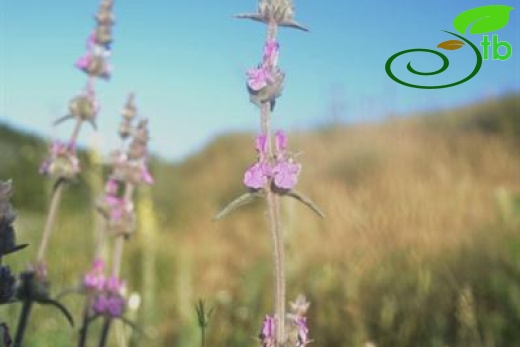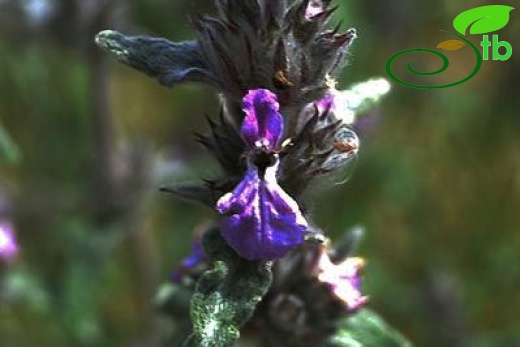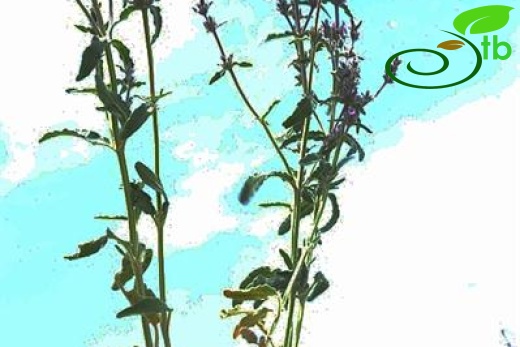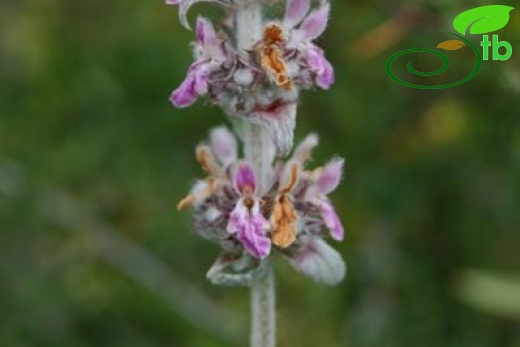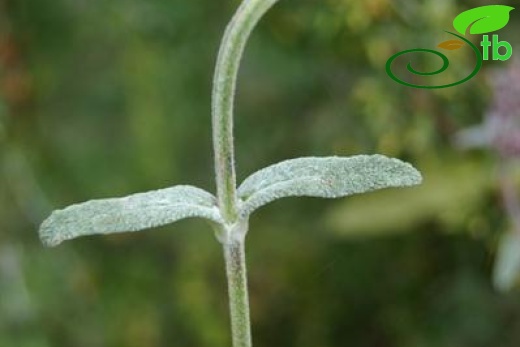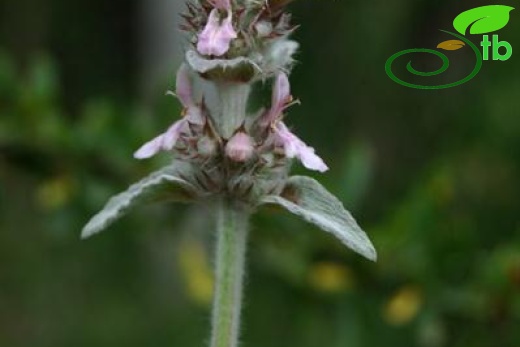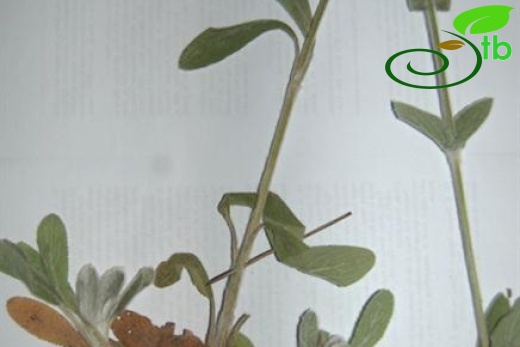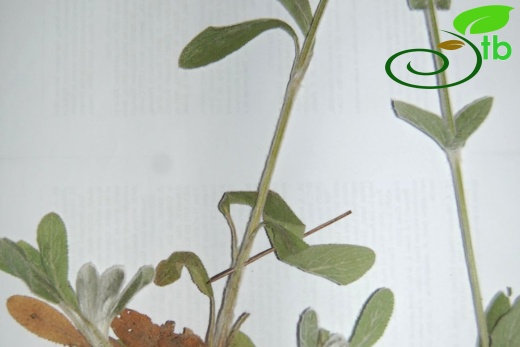Stachys byzantina
Stachys byzantina
Boz karabaş
Perennial with sterile basal rosettes. Flowering stems c. 1 m, usually simple, rarely sparsely branched, densely lanate-villous to floccose-tomentose, rarely sparsely arachnoid-tomentose, Basal leaves oblong-spathulate to broadly lanceolate, 3-8 x 0.5-3.5 cm, densely sericeous-tomentose to arachnoid, subcrenulate to entire, apex ± obtuse, always narrowed at base, attenuate or rarely rounded, with 2-6 cm petiole. Floral leaves sessile, lanceolate, 1-5 x 0.3-1 cm, upper ones as long as verticillasters. Verticillasters 15-20-flowered, usually remote below, ± approximate above, rarely all remote. Bracteoles ovate-lanceolate to linear-lanceolate, 1.5-7 mm, tip not spinescent. Pedicels 0.5-1.2 mm. Calyx sub-bilabiate, subcampanulate, 8-10 mm; teeth ovate-triangular, 1/4-1/3 x tube, tip very shortly mucronate, mucro 0.2-0.5 mm, ± erect to slightly recurved in fruit, eglandular, sometimes with few glandular hairs. Corolla rose-pink, 12-14 mm, tube ± included. Nutlets obovoid, 2.5 x 2 mm. Fl. 6-9. Rocky slopes, Juniperus scrub, field margins, 30-2000 m.
N. & N.W. Iran, Caucasia, Khorassan. Euro-Sib. element. Closely related to S. thirkei.



